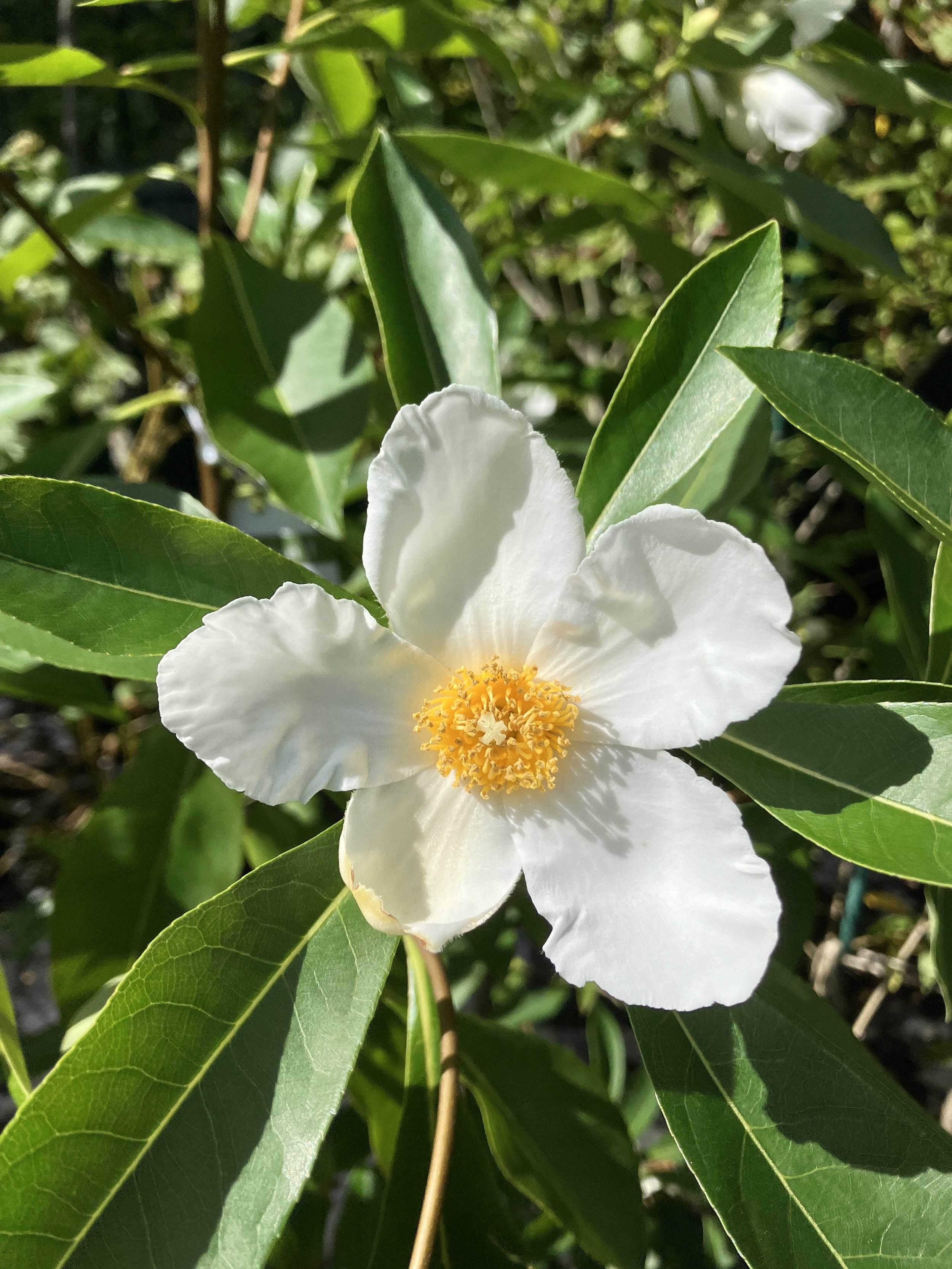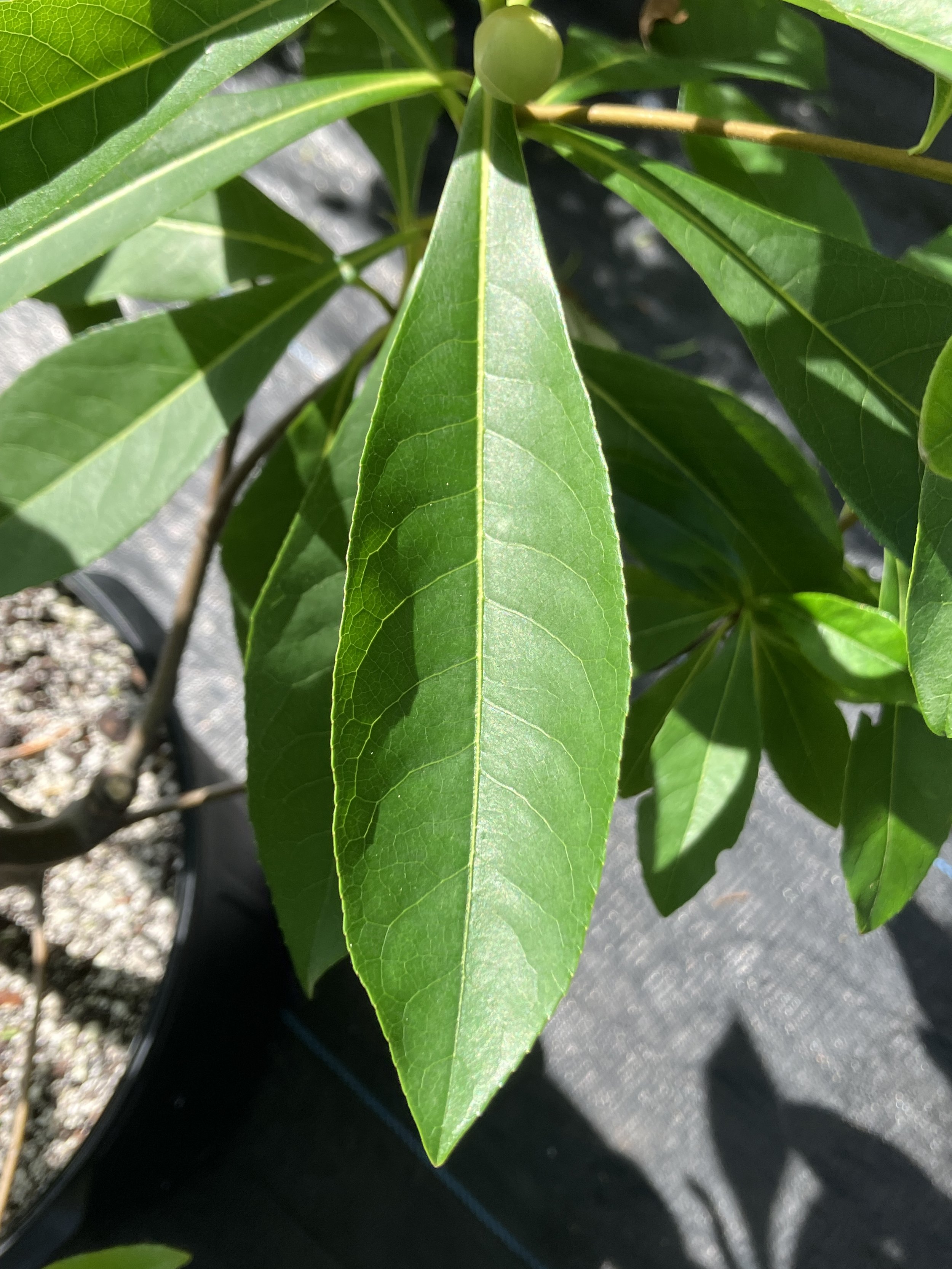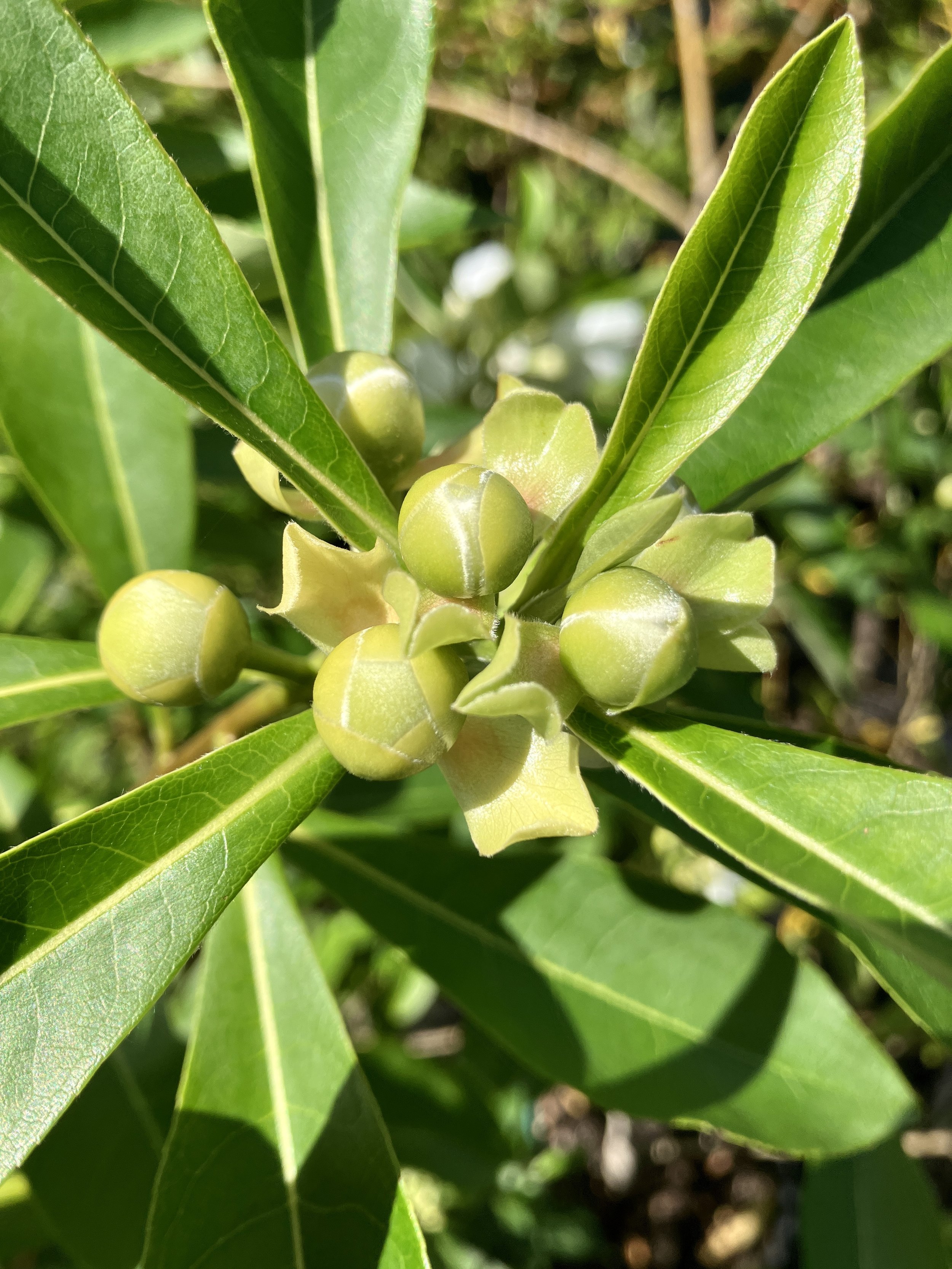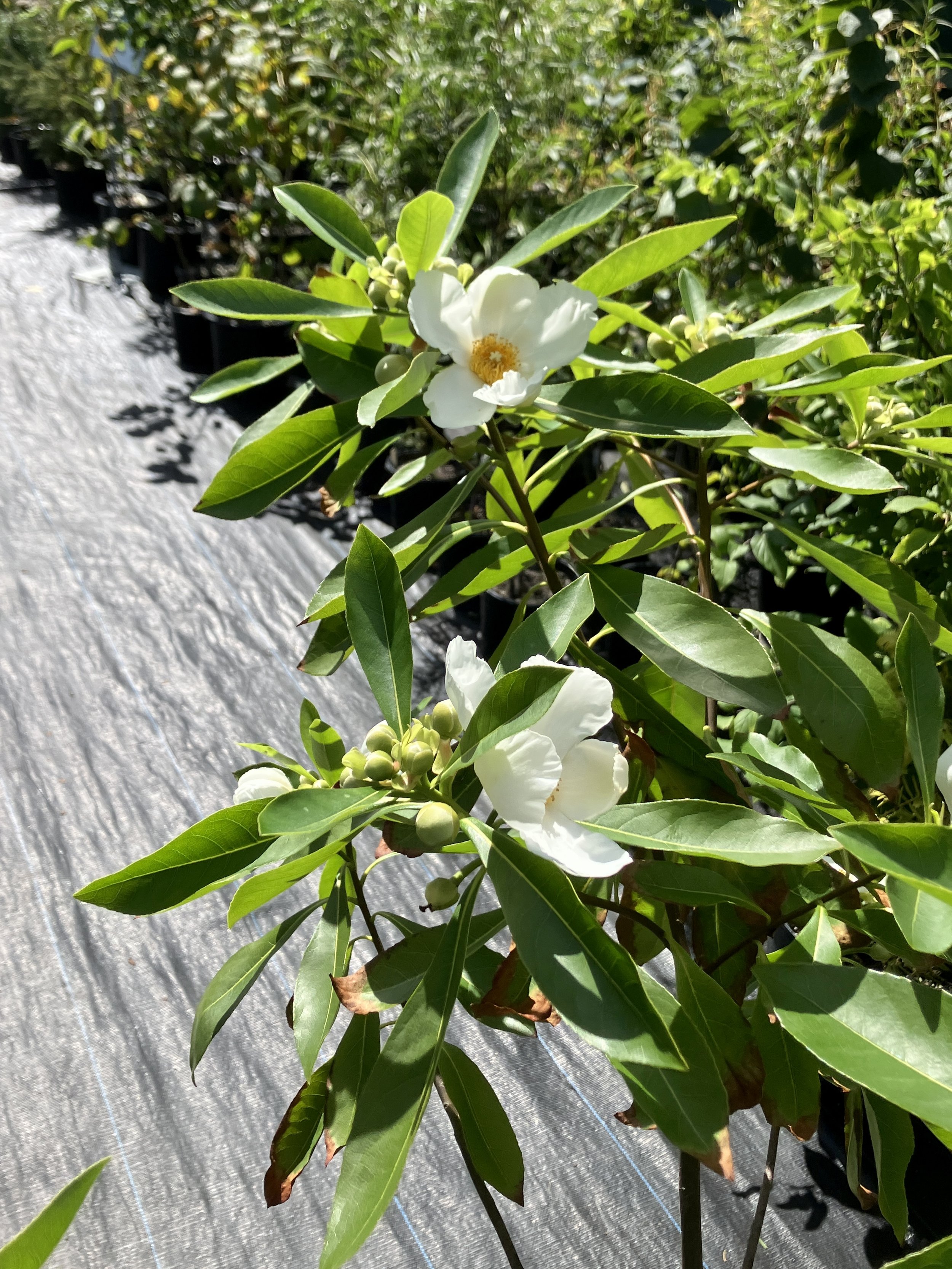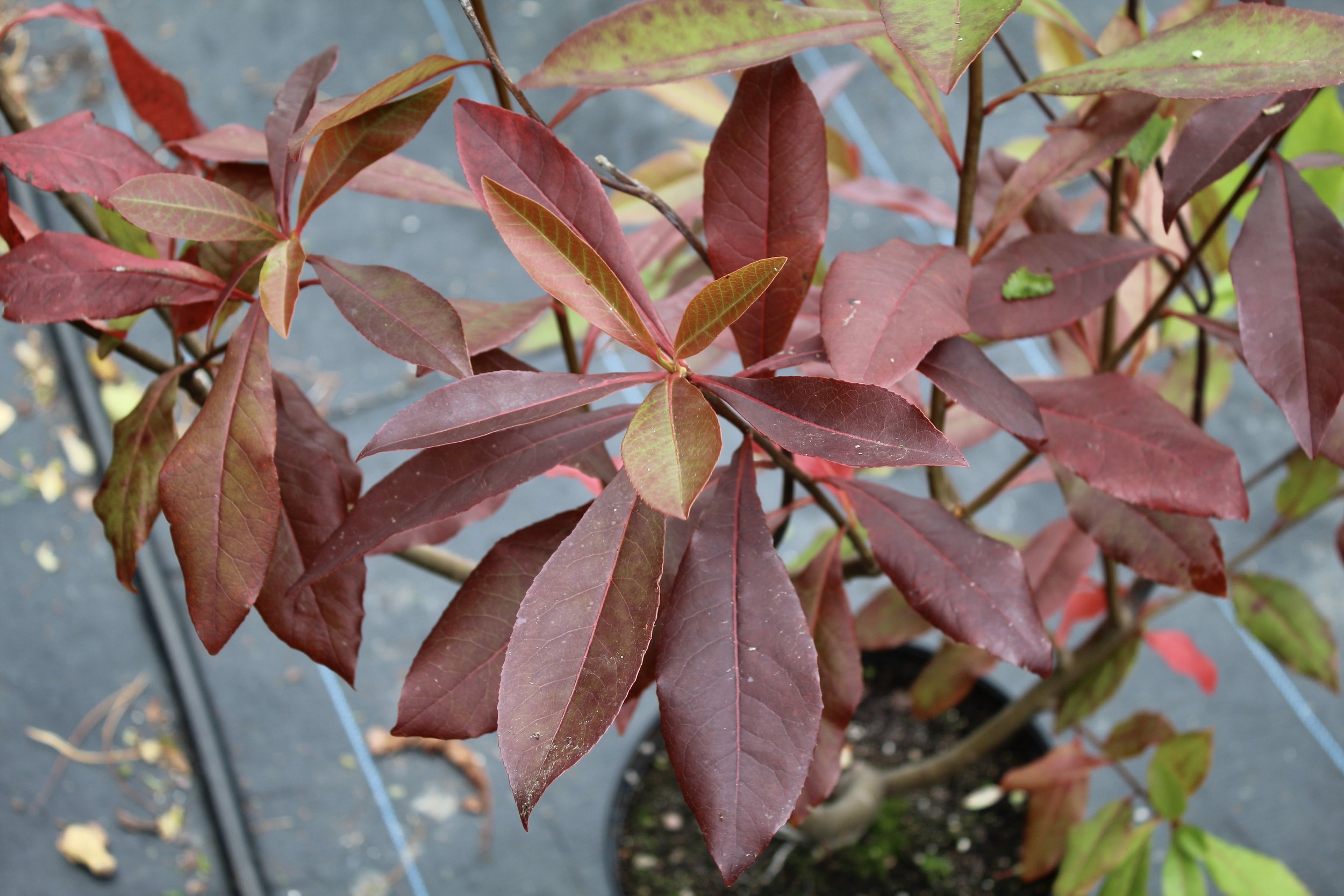The Grand Flora of the Gordlinia
I would like to introduce the groundbreaking Gordlinia (xGordlinia grandiflora), a fascinating hybrid that has really impressed at the Heritage Tree Center this year. A cross between the legendary Franklinia (Franklinia alatamaha) and the southeast native Gordonia (Gordonia lasianthus), this fast-growing, multi-stemmed tree or large shrub captures the eyes of all who see it. Nearly doubling its size this year, the plant is currently undertaking a floral marathon, with over a hundred flower buds to bloom for (hopefully) the next few months. If you’re familiar with Franklinia, this plant is similar in many ways, including most notably the white, five petaled flowers that open as summer begins to wrap up. An interesting characteristic I’ve noticed is that every flower has one petal that is smaller, more convex, and with a hint of yellow in the center. The narrow foliage is glossy and smooth, and last winter turned a striking bronze burgundy! It is semi-evergreen to deciduous in Rhode Island, whereas in zone 8 the tree is evergreen with only the interior foliage abscised.
Gordlinia is the outstanding result of breeding work carried out at North Carolina State University in 2002. Franklinia and Gordonia are both members of the theaceae family, along with stewartias, camellias, and a host of other flowering trees and shrubs. Nine seeds resulted from the cross pollination, with a superior seedling coined ‘Sweet Tea’ selected and propagated to become widely available. We have been very excited about the plant, which flowered for the first time in the nursery last year, blooming from August to October. Gordlinia possesses the ultimate combination of flowers, foliage, fall color, and chocolate brown stems to be ornamental to infinity. Full sun and lots of moisture doesn’t seem to faze it; this tree is almost certainly easier to get established than its parent Franklinia. Mature size is around 15’H x 10’W in Rhode Island, larger in the south. Best to provide protection from winter winds to help retain the foliage and prevent desiccation. This plant should become more popular in Rhode Island gardens in the coming years, as cultivation has proved successful.
-Joe Verstanding, Living Collections Manager

